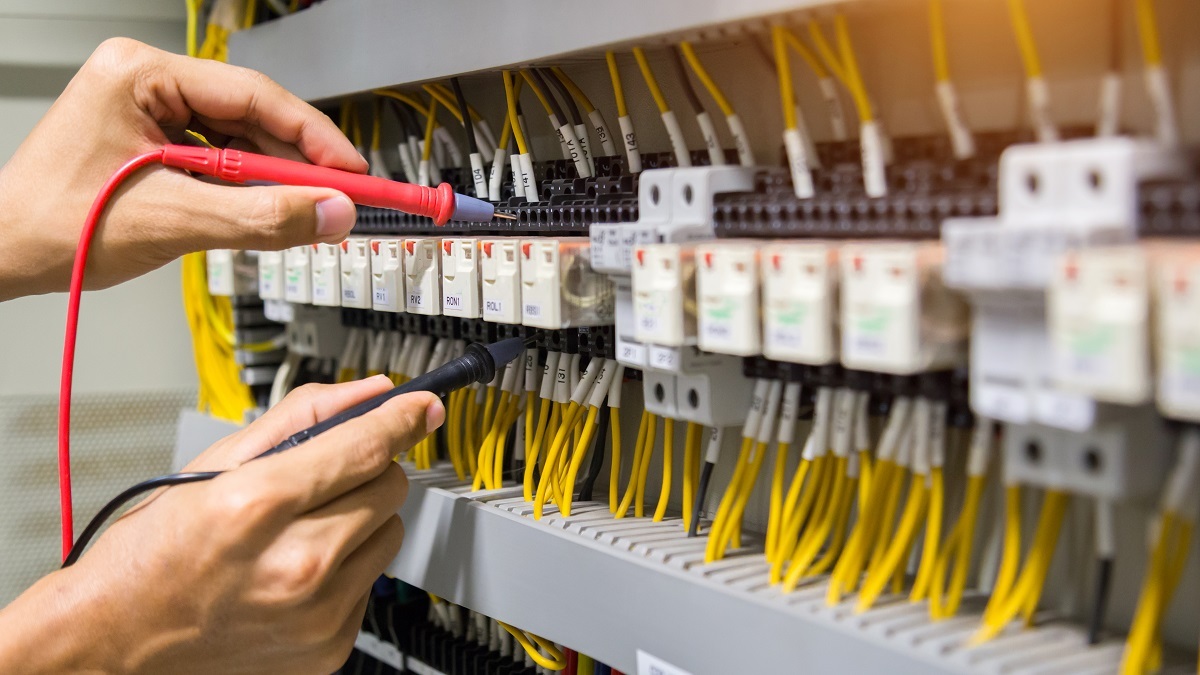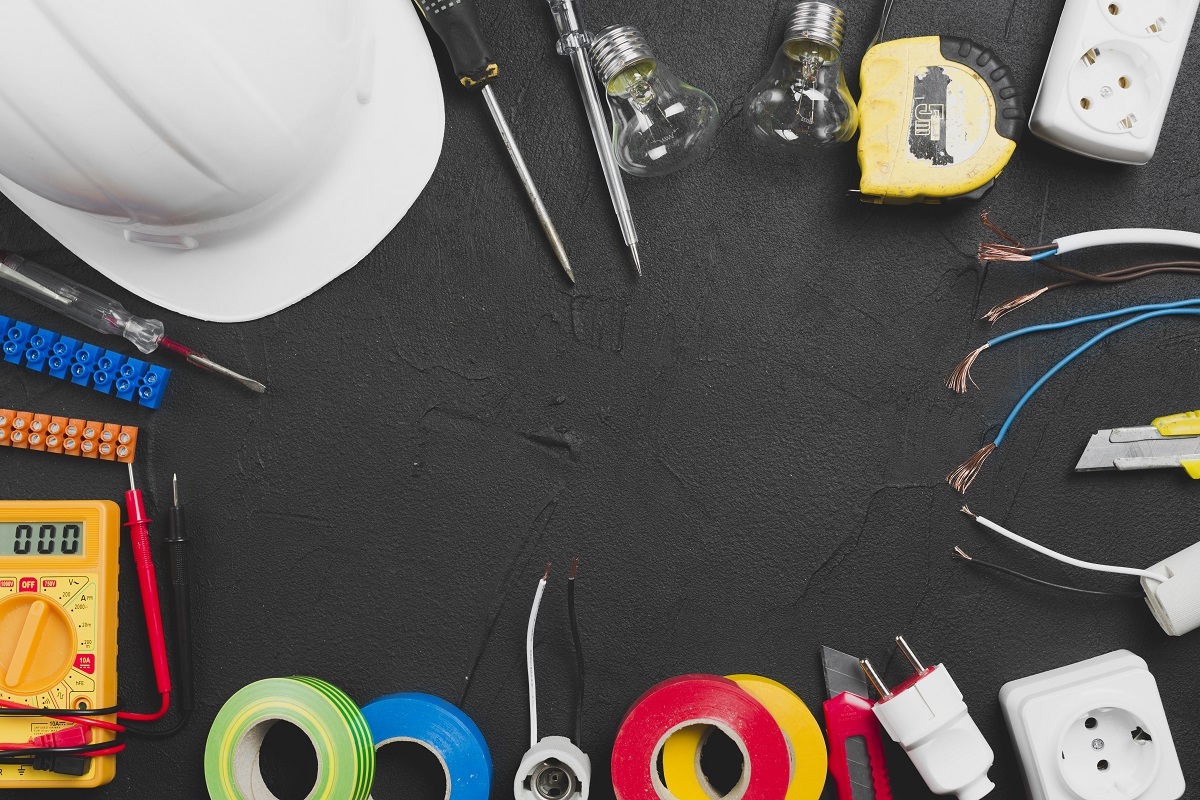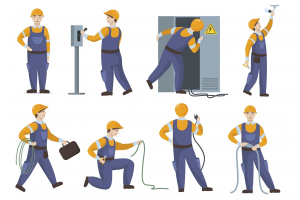
The National Electrical Code (NEC) is a regionally adopted standard for the installation of electrical wiring and electrical equipment. The current national electrical code 2020 edition comprises all the latest requirements for ensuring electrical safety and inspection in commercial, industrial, and residential settings.
On the other hand, a much similar code called the National Electrical Safety Code (NESC) is followed for electrical power systems such as overhead lines, power substations, and underground lines. These codes have been designed to reduce the accidents and issues faced regarding electricity. If a company strictly abides by these codes, electricity can then be used much safely.
However, people have a habit of breaking rules. They do not realize that when it comes to electrical power, even minor negligence can cause drastic implications. Be it a residential area, an industrial region, or a construction site, electrical safety issues are seen everywhere. In the article below, we shall look at the 10 electrical safety issues faced at a construction site along with the ways to fix them according to the national electrical code 2020.
Electrical Safety Issues at the Construction Site
1. Lack of Personal Protection Equipment (PPE)
An employer must supply their workers with adequate personal protection equipment. This may include gloves, shields, etc. This is because this PPE is their defense to any accident occurring on the construction site. However, employers are usually careless about this and do not provide their workers with the necessary equipment. They are left to be exposed to great risks when they are working with electrical wires and this often results in major accidents.
2. Overhead Power Lines
The overhead power lines possess a great risk to the workers on the construction site. The largely sized heavy machinery on the site can conduct electricity if it gets into contact with the overhead power lines. Hence, when the machinery is conducting electricity and a person touches the machinery, the electricity will be conducted through him/her as well eventually causing his/her death. It is estimated that more than 50% of the fatal accidents on construction sites are due to overhead power lines.
3. Underground Power Cables
The underground power cables can be even more hazardous since they are not visible. They are hidden inside the ground and it is not possible to correctly predict their location without coming in contact with them. Also, it is not possible to accurately predict if these cables are live when they are uncovered. This significantly increases the chances of an accident when a digging activity is being carried out on a construction site.
4. Improper Use of Electrical Equipment
On a construction site, workers have to use a lot of electrical equipment. Often at times, they forget the safety hazards that equipment can impose and carelessly handle them. This has also contributed to increasing the number of accidents on construction sites.
5. Working in Wet Conditions
The presence of water increases your chances of getting an electric shock while working with electrical equipment especially if that equipment is poorly insulated. Workers should completely avoid getting in contact with electricity in wet conditions. However, they usually ignore it and end up causing severe damages to themselves.
6. Inadequate Training
Mostly in third-world countries and generally throughout the globe, the workers present on the construction sites belong to underprivileged backgrounds. Instead of providing them with adequate training, employers hire them on small daily wages and exploit their poverty. The unawareness and lack of training among these important workers have been major contributors to increasing the risks on construction sites. These workers are not fully trained to use equipment and are bound to make mistakes that have been causing disastrous effects.
7. Wrong Testing
Before giving a green signal, testing is necessarily carried out on the construction sites. During that, the workers are supposed to interact with live current. The presence of voltage detectors and clamp meters is inevitable during that time but the opposite is usually witnessed. Absence of important and required machinery from the site and carelessness of the present personnel results in incorrect testing of electricity that eventually causes accidents.
8. Failure to Understand Signs
The company that carries out construction on a site places numerous signs on different locations in that area. These signs are particular to different hazards and risks present in those locations. Workers often fail to understand the meaning of those signs and become a victim of an accident.
9. Careless Welding
Another important contributor to the accidents on the construction site is careless welding. During the process of welding, sparks and hot flying particles are produced. These can move molten metals far from the area of work and start a fire. This usually happens because combustible materials such as certain liquids are left close to the welding region.
10. Overloaded Circuits

Usually, in an attempt to spend less money and to quickly get done with tasks, workers are provided with limited outlets and circuit breakers are avoided. Overloading an outlet with heavy electrical equipment can result in major accidents. They cause the heating of wires and can also bring about the fire on the construction site.
Solutions to the Electrical Issues at the Construction Site
To avoid any major accident due to electrical issues at the construction site, it is extremely important to carry risk assessments. These assessments should be carried out by highly professional individuals who can detect the risks present on the site so that the company and its workers could come well-prepared. To carry out these assessments, you must avail of calibration services to fix any issues with the instruments so that your estimations are not left with loopholes.
Listed below are the solutions to the above-mentioned 10 electrical issues faced at the construction site:
1. The companies should ensure the presence of adequate personal protection equipment (PPE) with all the workers working at the construction site. They should be supplied with insulating gloves, face shields, safety glasses, insulating boots, and a flesh protection kit so that they can work comfortably with the electrical equipment.
2. To overcome the issue of overhead power lines, workers should avoid getting into proximity with them. If that is unavoidable, the company should consult the responsible people and request them for the closure of the power supply in those lines when the workers are working near them.
3. To prevent accidents caused by underground cables, highway authorities and electrical companies should be consulted and maps should be obtained so that the correct location of the cable could be estimated. Moreover, the workers should be supplied with safety kits to ensure safe digging.
4. The correct use of electrical equipment at such a dangerous location is very vital. The workers should be given proper training specific to the equipment they might have to use.
5. Working in wet conditions can be deadly. It is better than the construction is delayed rather than putting the workers in life-threatening situations. Companies should try and skip working when the site is wet due to any reason such as rainfall. If equipment gets wet, it should immediately be referred to a qualified electrician before allowing power to pass through it.
6. Before starting with the construction on a site, companies need to carry out training programs for their workers. They should be guided in detail about all the minor and major things they need to consider during construction. The companies should ensure the pocket-friendly nature of these training programs so that the workers coming from underprivileged backgrounds are not left behind.
7. Before proceeding with the testing on the construction site, the company responsible should ensure the adequate presence of desired equipment that may include voltage detectors, receptacle testers, and clamp meters. Moreover, the professionals needed to be present on the testing site should be there so that the chances of a failed test are significantly reduced.
8. To curb the issue of misunderstanding signs, training is a key factor. All the workers should know the exact meaning of the signs present on the construction site. For the bystanders or visitors, the company could place another board describing the sign so that maximum protection could be ensured. It may get expensive but it is better than risking the lives of people.
9. Shields should be necessarily placed around the welding site to prevent the dangers it brings along. All the combustible material should be removed from the area where welding is being done. Furthermore, tool cords should be carefully positioned so that the sparks resulting from welding do not damage them. Make sure a fire extinguisher is present at all times during construction so that a mishap is easily dealt with.
10. Multiple outlets should be present on the construction site. In fact, for each electrical instrument, there should be a separate outlet. High-quality circuit breaks should be made available in a large quantity so that there are limited to no chances of accidents.
In the end, it is important to minimize safety issues at the construction site. All you need to do is detect the problems and fix them accurately.


